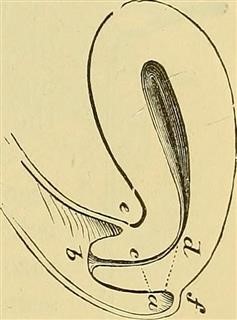The Infertility Organization
What Causes Female Infertility Problems
We have your source for total info and resources for What Causes Female Infertility Problems on the Internet.
6 Women with risk factors for tubal obstruction, such as endometriosis, previous pelvic infections, or ectopic pregnancy, should instead be offered hysteroscopy or laparoscopy with dye to assess for other pelvic pathology. This sterile needle is attached to sterile suction tubing and a collecting vial.
Use of clomiphene citrate in infertile women: a committee opinion. A urinary LH kit is a practical way to monitor these patients. FSH and LH are released into the systemic circulation and exert their effect by binding to plasma membrane receptors of the target cells. 6,8 It is important for primary care physicians to be familiar with the workup and prognosis for infertile couples.
More Resources For Infertility in Cushing's

Right here are Some More Resources on Infertility Testing
It is increasingly recognized that egg quality is of critical importance and women of advanced maternal age have eggs of reduced capacity for normal and successful fertilization. 10. Carried out by the GPs and should be offered to: 1. There is no reliable treatment, although microsurgery may be attempted.
More Details About What Causes Female Infertility Problems
During the first two years after menarche 50% of the menstrual cycles could be anovulatories. Since they will still be working with scopes and other laparoscopic instruments, CO2 will have to be maintained in the patient's abdomen, so a device known as a hand access port (a sleeve with a seal that allows passage of the hand) must be used.
Extra Resources For Infertility in Cushing's
In a recent meta-analysis, letrozole was found to be as effective as other methods of ovulation induction. [169] The usual dose for letrozole ovulation induction is 2. These include: Reduced hemorrhaging, which reduces the chance of needing a blood transfusion.[11][12] Smaller incision, which reduces pain and shortens recovery time, as well as resulting in less post-operative scarring.[12][13][14] Less pain, leading to less pain medication needed.[15][14] Although procedure times are usually slightly longer, hospital stay is less, and often with a same day discharge which leads to a faster return to everyday living.[13][16] Reduced exposure of internal organs to possible external contaminants thereby reduced risk of acquiring infections.[6] There are more indications for laparoscopic surgery in gastrointestinal emergencies as the field develops.[17] Although laparoscopy in adult age group is widely accepted, its advantages in pediatric age group is questioned.[18][19] Benefits of laparoscopy appears to recede with younger age. Vitrification of oocytes from endangered Mexican gray wolves (Canis lupus baileyi). (PDF, 319 KB) Theriogenology, 2010. Microscopic Technique for Reversal of Vasectomy. (PDF, 3 MB) Surgery, gynecology & obstetrics, 1976. IVF and related techniques (ICSI, ZIFT, GIFT) are called assisted reproductive technology (ART) techniques. Intra-uterine insemination for male subfertility. Showell MG, Brown J, Yazdani A, Stankiewicz MT, Hart RJ. The World Health Organization (WHO) published reference ranges for semen testing in 2010. [45] These include “lower reference limits” representing the 5th percentiles for semen characteristics. [46] Note that the lower reference limits do not serve as a cut-point between “fertile” and “infertile.” Volume Normal ejaculate volume is 1. After recovery, the testicle may return to normal or may atrophy. Secondary infertility When a woman is unable to bear a child, either due to the inability to become pregnant or the inability to carry a pregnancy to a live birth following either a previous pregnancy or a previous ability to carry a pregnancy to a live birth, she would be classified as having secondary infertility.
Previous Next
See also
Infertility Birth Rates
Resolve Infertility Statistics
Infertility Research Project